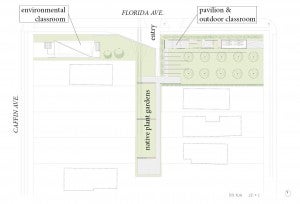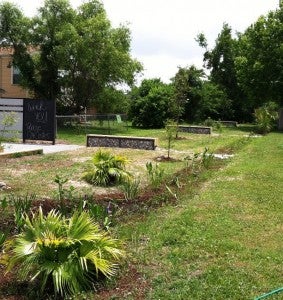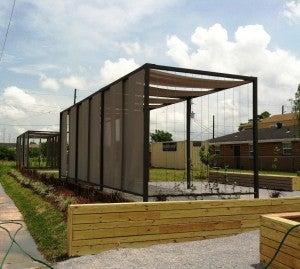Lower 9th Ward CSED Creates Environmental Learning & Research Center
By Rachel Pickens, Esq., Resiliency Manager for Coastal Outreach & Community Awareness, Lower 9th Ward Center for Sustainable Engagement and Development
“River to the Bayou” is a phrase often spoken by members the Lower 9th Ward Center for Sustainable Engagement and Development (CSED). When CSED was created in December 2006 by Pam Dashiell and Charles Allen, they envisioned rebuilding a more resilient neighborhood, one that stretches from the Mississippi River to Bayou Bienvenue. Learning from Katrina, they realized that resilience is more than strengthening the built environment – it also requires restoring and protecting the surrounding natural environment.
There is a need for more education and awareness of the importance of our coastal wetlands in communities like the Lower 9th Ward, which have and continue to be disproportionately affected by strong storms. Residents must look out to the coast protect what’s in the neighborhood, and in the Lower 9th Ward, that means reconnecting people with the river and the bayou.
To address this need, CSED is creating a Wetland Education Center for residents to learn and interact with the water that surrounds the neighborhood. The site will run along Florida Ave, between Caffin Ave. and Lamanche St., across the street is the Bayou Bienvenue Wetland Triangle and platform. It is composed of four lots, which CSED purchased from the New Orleans Redevelopment Authority in 2013. The first phase of the project, an outdoor classroom, was constructed through a partnership with Tulane’s School of Architecture during the 2015 spring semester.
The outdoor classroom includes a bioswale, where the sloped ground collects water that would otherwise cause flooding in the adjoining street. The goal is to retain 100% of all rainwater that falls on the site. Plants in the bioswale include spider lilies, thalias, irises, and soft rush, all plants that live well in wet and boggy soils.
The bioswale is divided into three zones, demarcated by oyster benches and oyster trails. The oysters serve as “check dams”, which slow down the rainwater and prevent it from eroding the bioswale. The three zones are a visual timeline of the neighboring Bayou Bienvenue. The zone by the entrance, with the diversity of native plants, represents the past, before Bayou Bienvenue was destroyed by the Mississippi River Gulf Outlet (MRGO). The middle zone represents the current state of the bayou, sparse with only a few switch grasses. The third zone, representing the future, remains unfinished and will be a site for additional plantings.
The site also includes two shaded structures. The first, an outdoor classroom and a second, to be used for kayak storage. Both structures are composed of steel columns and shade cloth that provides 90% UV protection. In front of the structures are rows of silver shower Aztec and purple foundation grass which will help prevent erosion. The outdoor class room also includes an orchard now growing grapefruit, orange, satsuma, kumquat, fig and apple trees, along with a magnolia tree. Program coordinator, Kathy Muse started a butterfly garden in the back part of the site several years ago.
Phase 2 of Wetland Education Center will include the placement of a modular classroom. Designed by Eskew+Dumez+Ripple, in partnership with the US Green Building Council (USGBC), the classroom features sustainable building materials and design elements. It was showcased at the 2014 USGBC Green Build, held in New Orleans. The classroom, which was donated to CSED, will be used as a K-12 environmental education center and research space.
While the Wetland Education Center is still a work in progress, it is currently open to the community and it will be a gathering and learning site for wetland awareness and water management. CSED believes that the first step towards resiliency is education and with the help of the Wetland Education Center, the Lower 9th Ward will become more resilient than ever.
CSED and other environmental groups will be holding a ribbon cutting ceremony for the first phase of the project on August 11th at 10am, following a press event at the Bayou Bienvenue Wetland Triangle Platform to discuss the state of our coast 10 years after Hurricane Katrina. For more information on this event, contact Samantha Carter at carterS@nwf.org.
For more information on CSED and how you can get involved, click here.


